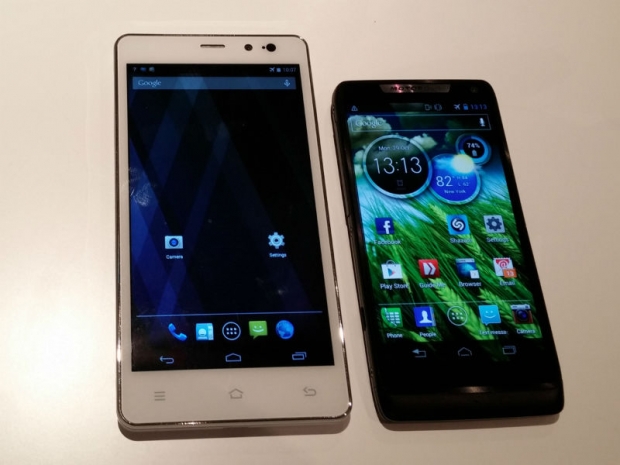MediaTek has started the frugal octa-core trend a while ago, most likely because eight is a lucky number in China. Although many industry observers dismissed MediaTek’s efforts as a marketing ploy, we did not – and this article from 2013 proves it.
Qualcomm, leading name in mobile phone SoCs followed with its eight core SoCs. Samsung is now making its own SoC which will end up in tens of millions of Galaxy S6 series phones. Qualcomm, MediaTek and Huawei have Cortex-A53 octa-cores for mainstream and mid-range phone.
Intel didn’t have much room for the high end design wins. Intel always has Asus, the only major brand Intel’s SoCs in phones, but it failed to capture the attention of bigger players like Samsung, LG, HTC, Huawei, Sony or ZTE.
Now Intel has SoFIA chips and we saw the first 3G Sofia prototype phone that is currently running Kit Kat Android 4.4 We know it is not the latest and greatest Android version, but it is still a decent phone that should ship at an acceptable price. Intel didn’t want to mention the exact price of SoFIA phones powered, but they should sit well below $199. You get an affordable 720p 5- to 5.5-inch phone with a decent processor at rock bottom prices, a trend that is becoming apparent in China, and with some other brands like HTC.
The SoFIA SoC will get a 4G version later this year but we don’t think that 4G matters too much in this market segment as mobile network providers are simply charging too much for 4G plans compared to 3G and we don’t see many people with entry level to mainstream phones to end up paying for these expensive, unlimited 4G plans anytime soon. Those who choose such plans are much more likely to get a flagship phone on a two-year contract anyway.
We strongly believe that Motorola helped change the market with its affordable Moto G and Moto E phones, by offering decent performance at a very inexpensive price point. Since more and more phones are coming unsubsidized trough many providers in Europe, we believe that the price plays a major role in the phone decision making.
We didn’t benchmark SoFIA 3G but we would expect that it should be on par with the quite successful Snapdragon 410 phone, and this should be enough for the mainstream user. Let’s hope for Intel’s sake that Intel can get some business and attention with the SoFIA family, especially once it transitions to 14nm.




